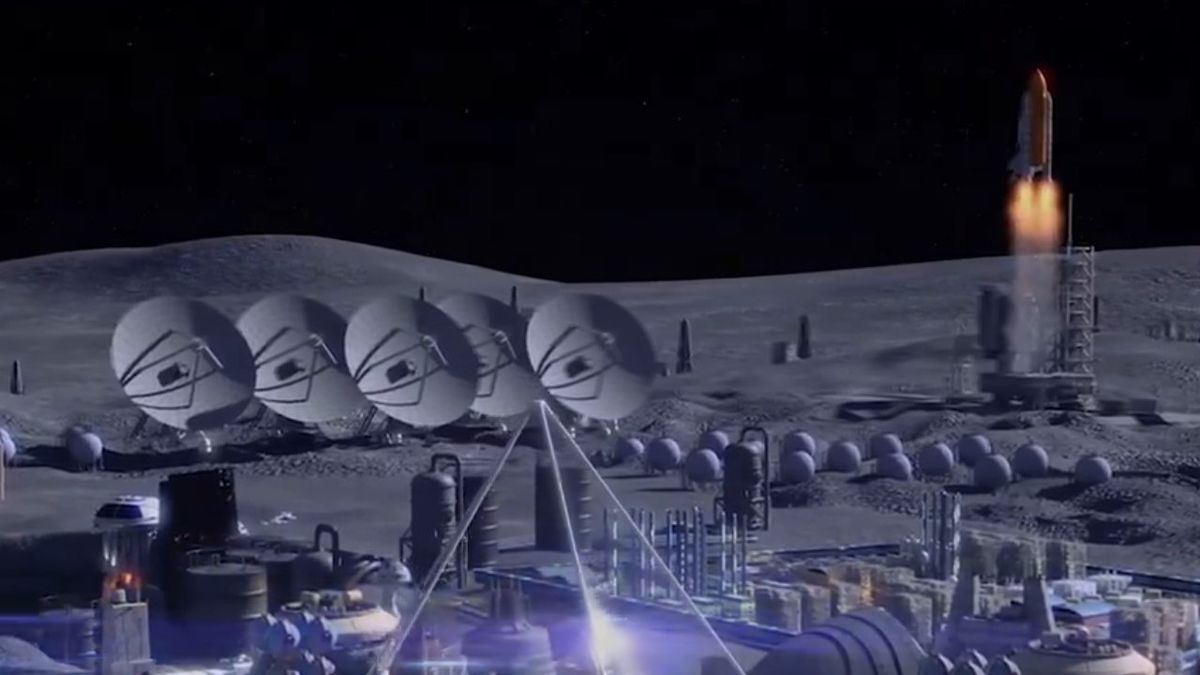Gaze upon the ‘blood-red gaze’ of two eerie galaxies in latest Hubble and JWST images (video)

Stare into the ‘blood-soaked eyes’ of 2 spooky galaxies in new Hubble, JWST images (video) (Image Credit: Space.com)
Two of the world’s most powerful space telescopes have spied a “spooky pair” of galaxies in deep space, staring out like a pair of “blood-soaked” eyes — and just in time for Halloween.
The James Webb Space Telescope (JWST) and Hubble Space Telescope teamed up to image two spiral galaxies known as IC 2163 and NGC 2207 as they appeared millions of years ago. That’s because the pair of colliding galaxies resides some 80 million light-years away in the Canis Major constellation, the “Big Dog,” which means the light they emit takes that long to reach Earth.
This pair of galaxies is currently in the process of colliding and merging into one, a process that will take around a billion years. “Stare deeply at these galaxies,” the JWST team wrote in a statement accompanying the new images. “They appear as if blood is pumping through the top of a flesh-free face. The long, ghastly ‘stare’ of their searing eye-like cores shines out into the supreme cosmic darkness.” Spooky!

Below, we can see Hubble’s ultraviolet and visible light observations of the galaxies on the left, and JWST’s mid-infrared light observations of them on the right. In Hubble’s image of IC 2163 and NGC 2207, the star-filled arms of the spiral galaxies glow in blue, while the cores of both galaxies are seen in bright orange.
Related: Hubble Space Telescope: Pictures, facts & history

In Webb’s image, taken with its MIRI instrument, the cold dust of both galaxies glows an in eerie white. At the bottom of this image, a bright spot glows with the characteristic eight-pointed star-like “diffraction spikes” produced by Webb’s mirrors. This region is “a location where many stars are forming in quick succession,” according to the JWST team’s statement.

The smaller IC 2163 is in the process of moving past its larger companion NGC 2207 in the ever-shrinking orbit between the pair in a cosmic dance that will continue for hundreds of millions of years. IC 2163 made its closest brush with its neighbor some 40 million years ago, according to NASA.
The two spiral galaxies produce roughly two dozen new stars the size of our sun each year, according to the statement, as gas is churned up by the interactions between the galaxies. The pair has also hosted seven known supernovas in recent decades, much higher than the average of one per 50 years seen in our own galaxy, the Milky Way.
As these two galaxies grow closer together and begin to merge, their cores and arms might combine together to form new, reshaped arms and a larger, brighter core. At this point, the dance between the two will calm, and star formation will slow as the gas and dust surrounding the new merged galaxy cools.
But for now, as seen some 80 million years ago, the cosmic ballet between NGC 2207 and IC 2163 continues, leaving us with some spooky images just in time for the Halloween season.





